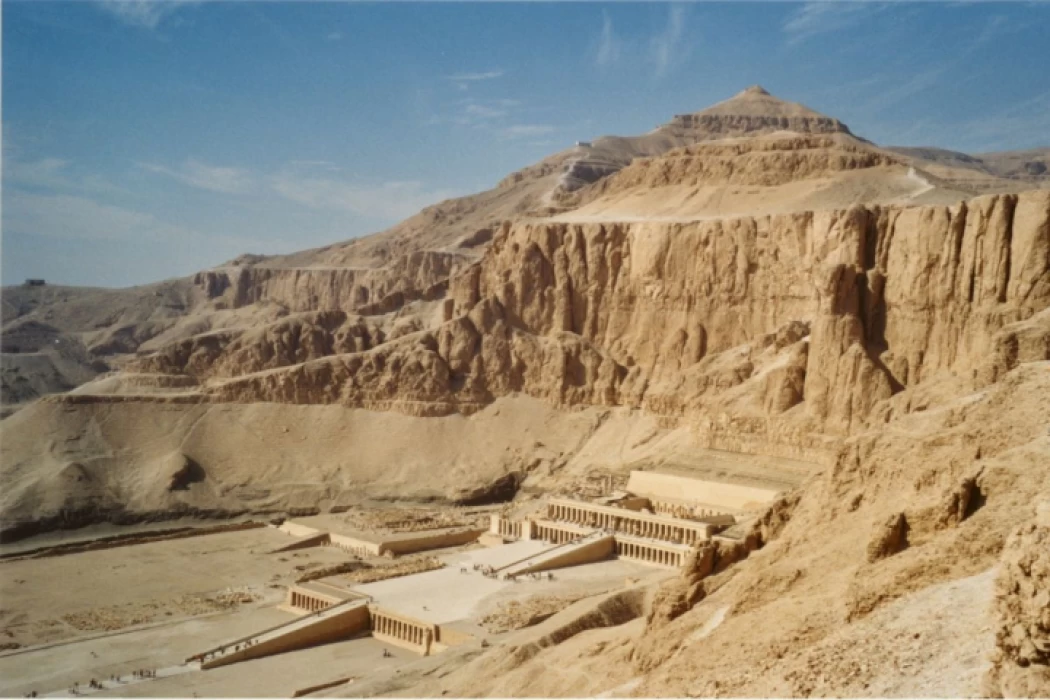
Deir el-Bahari cache
Facts About Deir el-Bahari cache
Deir el-Bahari is an archaeological site as well as a cluster of mortuary temples and tombs, situated on the western bank of the Nile River, across the city of Luxor in the country of Egypt. It is a semi circular coast of rocks found to the east of the Valley of the Kings, and stands among the oldest and most acclaimed monuments in Egypt. It contains three temples, the first for King Mentuhotep II, the second temple is the temple of Queen Hatshepsut, and the third dates back to Thutmose III. These three temples are connected by long bridges. The location has a number of additional significant attractions that can be explored. It is said that during the Third Intermediate Period, between 1075 and 656 BC, the Deir el-Bahari place was occupied as a private burial ground. The Deir el-Bahari refers to the region around the Theban Necropolis. The Deir el-Bahari place gets its name from the monastery that was constructed at this place in the seventh century A.D. and is further referred to as the North Monastery.
And the building of Queen Hatshepsut's Temple inside Deir el-Bahari started right away following her assumption of power, in order to carry out rituals which would be for her benefit in the afterlife; this lasted for 20 years until she died, after which construction on the monastery stopped until the late reign of "King Thutmose III".
In the Middle Ages, Deir el-Bahari was badly ruined because its stones were used to build a lot of mosques and churches, and in the nineteenth century European archaeologists began to dig it, and since that time, it has been partly restored.
This famous architect Senenmut of ancient Egypt is said to be the only designer credited with the designing work of the temple of Hatshepsut. Other materials used in the construction work by the architect Senenmut include limestone, basalt and even marble.
The Deir el-Bahari Mummy Cache is the final resting place of various mummified bodies of ancient Egyptians recovered from their tombs during the Twenty-first Dynasty of the New Kingdom when looting of royal tombs became rampant. The Deir el-Bahari cache includes such rulers of the Eighteenth and Nineteenth Dynasties as Amenhotep I, Thutmose I, II, and III, Ramesses I, II, and Seti I. The KV35 cache includes Thutmose IV, Ramesses IV, V, and VI, Amenophis-Amenhotep III, and Merenptah, together with unidentified mummies, some being placed in unmarked coffins or stacked in corridors.
The mummy cache at Deir el-Bahari was firstly discovered in 1875, and in relation to that, during the next couple of years, excavations were performed by Gaston Maspero-the head of the Egyptian Antiquities Service-and the mummies, which were placed in the Egyptian Museum in Cairo. Another tomb, Tomb KV35, had been discovered by Victor Loret in 1898. These mummies, too, were shipped to the cairo mummy museum. The Egyptian government is making efforts to preserve Deir el-Bahari, including:
Creating an environmental buffer zone around the temple to save it from external contamination and excess tourism-related activities. Restorative work is done periodically for the maintenance of the temple. Installing signboards, conducting awareness programs for the tourists regarding the need to protect the temple.














